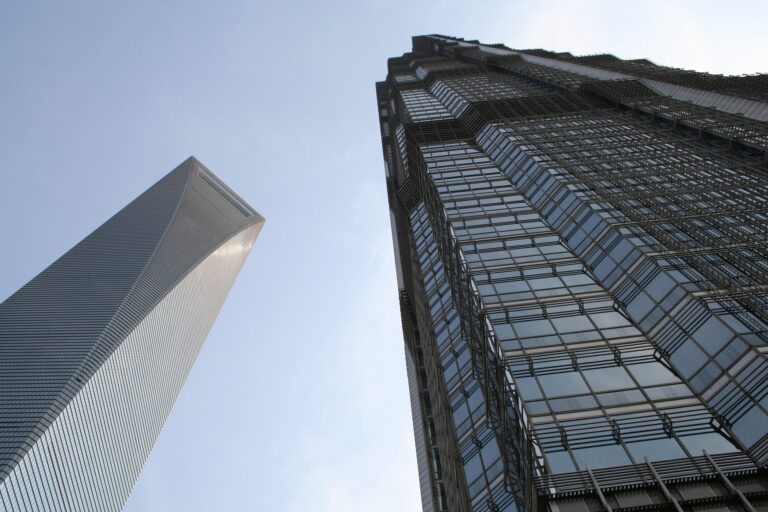Indonesia’s heavy industry sector plays a vital role in the country’s economy.
The sector consists of various segments such as construction, infrastructure, mining, and manufacturing, which contribute significantly to the country’s Gross Domestic Product (GDP) and provide employment opportunities.
The heavy industry sector is driven by several factors such as government initiatives, rising infrastructure developments, urbanization, and a growing population. This article provides an overview of Indonesia’s heavy industry sector, including its important segments, current trends, regulations, challenges, and interesting statistics.
Important Segments:
Indonesia’s heavy industry sector includes several segments, such as construction, infrastructure, mining, and manufacturing. The construction industry is one of the largest segments, contributing significantly to the country’s GDP. The sector is driven by the government’s efforts to improve the country’s infrastructure, such as building new airports, ports, and highways.
The infrastructure segment is also a crucial part of the heavy industry sector, as it includes the development of transportation systems, telecommunication networks, and energy distribution. Indonesia has invested heavily in its infrastructure in recent years, and the government has announced plans to spend around USD 433 billion on infrastructure development by 2024.
The mining industry is another important segment of Indonesia’s heavy industry sector, as the country has significant mineral resources. Indonesia is the world’s largest producer of nickel, and also has abundant reserves of coal, gold, copper, and tin. The country’s mining sector has faced various challenges, including the impact of the COVID-19 pandemic and regulatory uncertainties.
The manufacturing industry is also a significant segment of Indonesia’s heavy industry sector, with various sub-sectors such as automotive, electronics, and textiles. Indonesia has become a major player in the automotive industry, with several global automotive companies setting up manufacturing facilities in the country.
Current Trends:
Indonesia’s heavy industry sector is experiencing various trends, including the adoption of new technologies, the increasing demand for renewable energy, and the growing focus on sustainability.
The use of automation and artificial intelligence is becoming increasingly popular in the manufacturing and mining industries, allowing for increased efficiency and productivity.
The demand for renewable energy is also on the rise, and Indonesia has set a target to generate 23% of its energy from renewable sources by 2025. The government has implemented various policies and incentives to promote the use of renewable energy, such as tax exemptions and feed-in tariffs.
The focus on sustainability is also increasing in Indonesia’s heavy industry sector, with companies implementing sustainable practices to reduce their environmental impact. This includes the use of renewable energy sources, waste reduction, and the adoption of green technologies.
Regulations:
Indonesia’s heavy industry sector is regulated by various government agencies, such as the Ministry of Industry, the Ministry of Energy and Mineral Resources, and the Ministry of Public Works and Housing. The government has implemented various regulations and policies to promote the development of the sector, such as tax incentives for companies investing in infrastructure and energy projects.
The mining sector is also regulated by the Ministry of Energy and Mineral Resources, which issues licenses and oversees the implementation of regulations related to mining activities. The manufacturing industry is regulated by the Ministry of Industry, which sets standards and guidelines for manufacturing practices.
Challenges:
Indonesia’s heavy industry sector faces various challenges, including regulatory uncertainties, infrastructure deficiencies, and skilled labor shortages. The government has taken steps to address these challenges, such as improving infrastructure and investing in education and training programs.
The COVID-19 pandemic has also impacted the heavy industry sector, causing disruptions to supply chains and reducing demand for certain products. The sector has also faced challenges related to environmental sustainability, with companies facing increasing pressure to reduce their environmental impact.
Interesting Statistics:
• Indonesia’s construction industry is expected to grow at a CAGR of 6.7% between 2021 and 2025
• In 2020, Indonesia’s steel production reached 20.5 million tons, a significant increase from the 2019 production of 17.9 million tons.
• The total value of Indonesia’s industrial machinery and equipment exports in 2020 reached $10.8 billion.
• As of 2020, the heavy equipment market in Indonesia was valued at $2.3 billion.
• The mining and quarrying sector, which heavily relies on heavy industry equipment, contributed 8.11% to Indonesia’s GDP in 2020.
• The Indonesian government has set a target to produce 9.6 million tons of nickel in 2021, a significant increase from the 2020 production of 3.3 million tons. This target is expected to be achieved through the development of downstream processing facilities and the construction of new smelters.
• As of 2020, the total investment value in Indonesia’s petrochemical industry reached $5.5 billion.
• In 2019, the total production volume of Indonesia’s cement industry was approximately 100 million tons.
• The total installed capacity of Indonesia’s electricity sector was 70.4 GW as of 2020, with coal-fired power plants dominating the country’s energy mix.
These statistics highlight the significant contribution of the heavy industry sector to Indonesia’s economy and the ongoing efforts to increase production and investment in various sub-sectors.
However, they also indicate the challenges faced by the sector, particularly in terms of meeting environmental and sustainability goals.
In conclusion, Indonesia’s heavy industry sector has undergone significant growth in recent years, driven by increased infrastructure development and the country’s strong demand for raw materials. Despite challenges such as regulatory uncertainty and limited investment in research and development, the sector is expected to continue its growth trajectory in the coming years.
The steel and cement industries are the largest segments in Indonesia’s heavy industry, with both industries benefiting from the country’s strong infrastructure development plans. The mining industry also plays a significant role in the sector, with the country being a major exporter of coal and minerals.
To support the growth of the heavy industry sector, the Indonesian government has implemented various regulations and initiatives, including tax incentives and investment in infrastructure development. However, there are still challenges to be addressed, such as improving access to financing and increasing investment in research and development.



